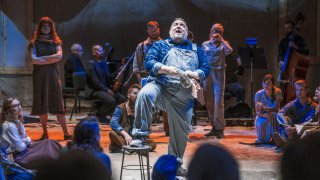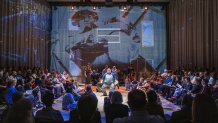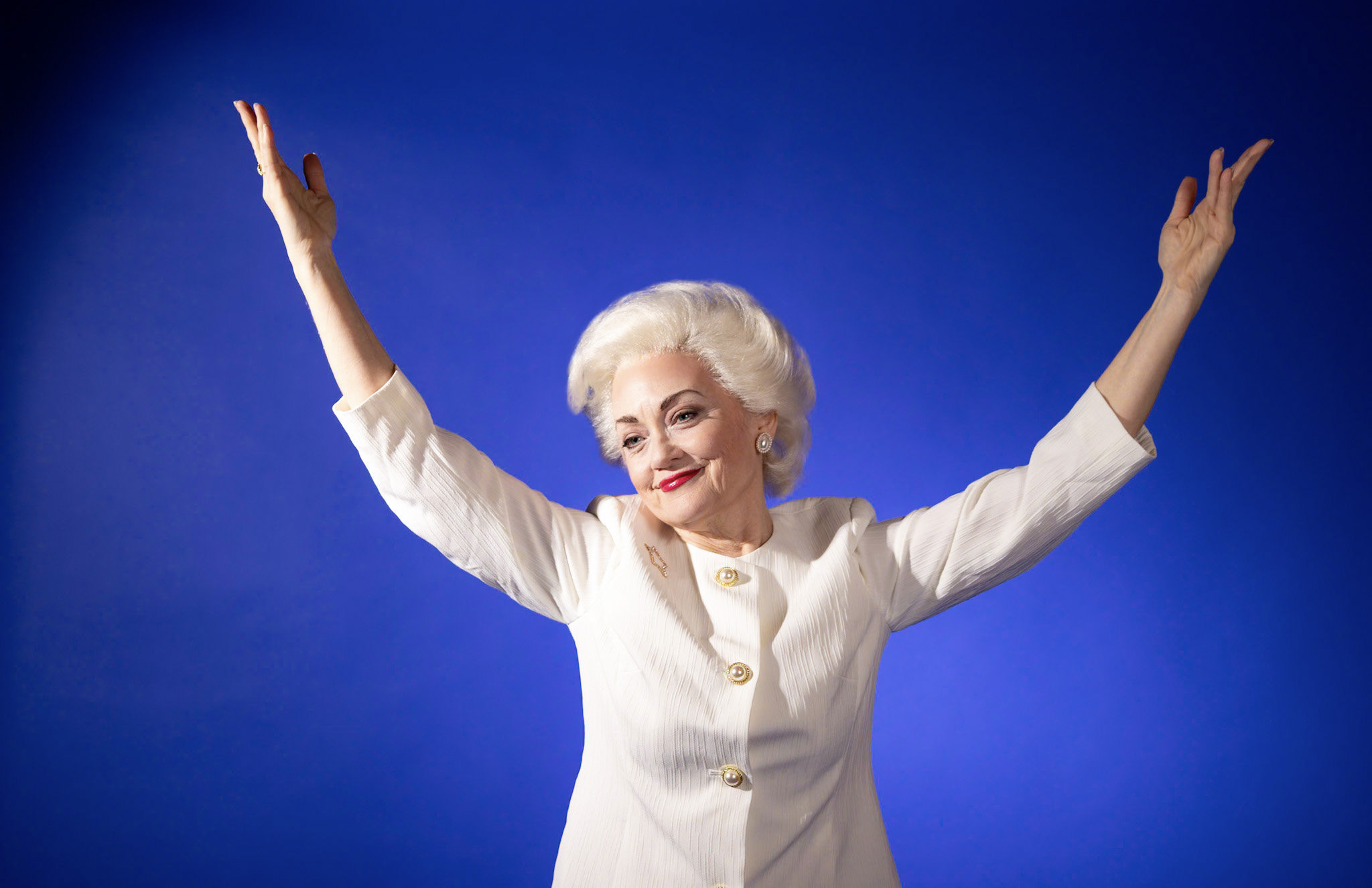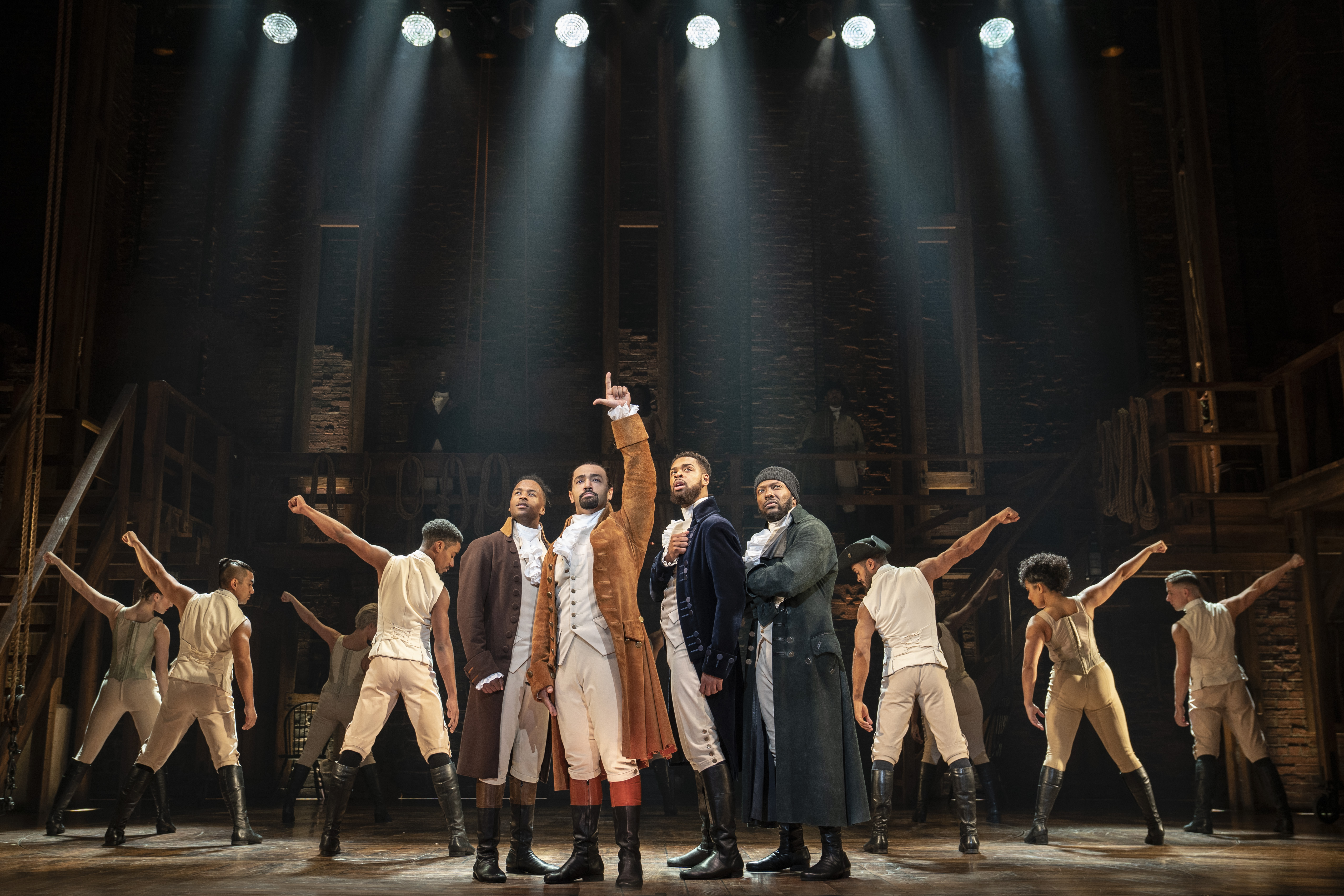
A couple of weeks before the Covid-19 pandemic forced the closure of theaters, museums and concert halls, Verdigris Ensemble premiered Dust Bowl, an ambitious piece composed by Anthony J. Maglione with a libretto by Ron Witzke. Four years after that sold-out premiere weekend, Verdigris Ensemble is bringing back the piece based on survivors’ accounts of the 1930s man-made environmental disaster as well as newspaper articles and diary entries.
“When we premiered Dust Bowl in 2020, we felt like it was unfinished. We took four years to workshop it, see what things we could improve, how we could perfect the narrative and staging and have now brought it back with new music movements, new and improved staging, and a more sophisticated storytelling than ever before,” said Sam Brukhman, Verdigris Ensemble’s founding artistic director.

Dust Bowl is part of Verdigris Ensemble's seventh season entitled "Regrowth," a series of concerts devoted to diverse issues surrounding environmental justice, ecology, and conservation at home and beyond. The concert is running at the Wyly Theatre from Feb. 23-25. This is the first time Verdigris Ensemble has performed at the Dallas Arts District venue.
Get DFW local news, weather forecasts and entertainment stories to your inbox. Sign up for NBC DFW newsletters.
“Verdigris Ensemble is an integral part of the modern arts and culture scene in Dallas and the Wyly is situated in the middle of the arts district downtown – so that’s right where we belong. Though the Wyly is not typically used for choral concerts, it is a venue perfectly suited for theatrical storytelling—which is what we aim to do with Dust Bowl,” said Claire Choquette, the project’s director.
This production combining bluegrass, video projection, and choreographed movement is significantly different from the 2020 performance.
“We have added three new pieces and reworked six others. Not only will the music be different this is also our most ambitious production in terms of staging, projection, and set design. It will be more sophisticated than ever before, augmenting the story of the Dust Bowl to resonate with more audiences,” Brukhman said.
Staging a choral work like Dust Bowl is an unusual assignment.
“The musical structure of Dust Bowl is a cantata, but cantatas are not traditionally staged, so we are branching into undiscovered territory. This particular production lives in between the cracks of many different art forms and therefore has little precedent. It’s not a choral concert, not exclusively a cantata, not an opera, and not a musical, but it carries elements of all of these. We are daring to change the way audiences experience these art forms, which is a joy – but also a challenge,” said Claire Choquette, the project’s director.
The set and projections draw on cultural references from the 1930s.
“When we came up with the visual concept for Dust Bowl, I was really interested in how we could juxtapose the archival footage with something that offered both levity and a little absurdity to the live experience. The Dust Bowl is a massive tragedy on so many levels, but Tony Maglione's music is able to emphasize that desperation, while also weaving in moments of mania, laughter, and towards the end, hope. It was the 1930s, so Bugs Bunny and other early cartoons were everywhere in mainstream entertainment. Once we paired the archival footage with cartoons, this led to the idea of encapsulating the entire performance in the frame of an old movie. A movie is both a depiction of reality and one step removed from it. I like to think of this production as the live meld of a Dust Bowl documentary and Fantasia,” said Micaela Bottari, the set designer for the project.
Contrasting these cultural touchstones with archival footage visually amplifies the themes of the music.
“In terms of the set, there are two scenes that lend themselves really well to cartoon elements. I started by envisioning the Rabbit Roundup scene cutting between Bugs Bunny running from farmers, and archival footage of the actual Dust Bowl rabbit hunting. I saw the stage hung with physical rabbits. I made these rabbits out of old scrap fabric (textile is very present in images from that period) because I wanted the audience to find this scene unsettling. We recognize that they represent "real" rabbits killed for wreaking havoc on the land, but they look like a child's doll, made from the scraps that parents may have strung together as a toy. It's a rare moment of musical levity, but the suffering and violence against humans is simply redirected to the animals,” Bottari said.
For Dust Bowl, Verdigris Ensemble partnered with EarthX, an international nonprofit and global environmental organization dedicated to environmental awareness and education. The Dallas-based organizations will collaborate on live and recorded performances dedicated to environmental justice, ecology, and conservation. The collaboration includes a special presentation of Dust Bowl at the EarthX2024 Congress of Conferences at the Hilton Anatole Hotel in Dallas April 22-26.
“EarthX sees the value of telling narrative stories that underscore the importance of the environment and our impact on the earth. They have repeatedly told us how much they're looking for art-based and narrative stories about climate change, and Dust Bowl was the perfect fit for them. The partnership is pretty historic in that EarthX is providing critical audience and marketing support while we provide what we do best, the art,” Brukhman said.
Dust Bowl brings to life a devastating chapter of history in hopes that it is not repeated.
“While I was researching Dust Bowl, I was also reading Barbara Kingsolver's Demon Copperhead. It's set in southern Appalachia in the aftermath of coal mining in Lee Country, Virginia. It reminded me that the Dust Bowl is not an isolated incident. Throughout history and still today, the environment is ravaged for greed, and laborers are often left maimed or destitute in the wake of unsustainable farming, mining, or otherwise. Labor rights and environmental action have always been inextricably linked. If re-telling the story of Dust Bowl can teach us anything about living today, it's that taking care of and preserving the environment must be done in lock step with taking care of each other,” Bottari said.

“Looking back at this time in history gives us the opportunity to experience the devastation that occurs when humans are not good stewards of the earth. They say history repeats itself, so if we don’t take time to reflect on the environmental mistakes of the past, we may find ourselves in a similarly devastating situation in the not-too-distant future,” Choquette said.
“We risk a Dust Bowl on a much greater scale if we don't take care of the soil we till,” Brukhman said.
Learn more: Verdigris Ensemble



